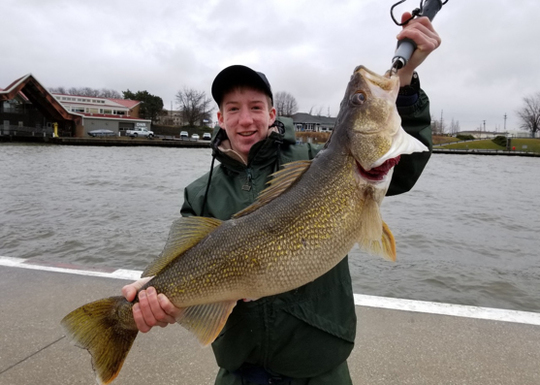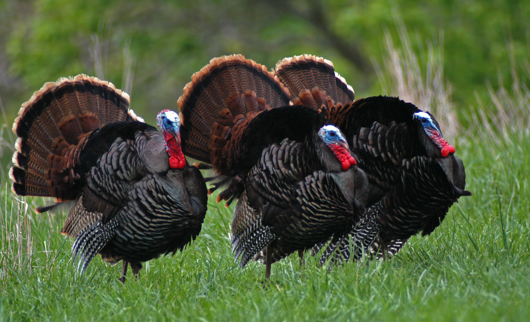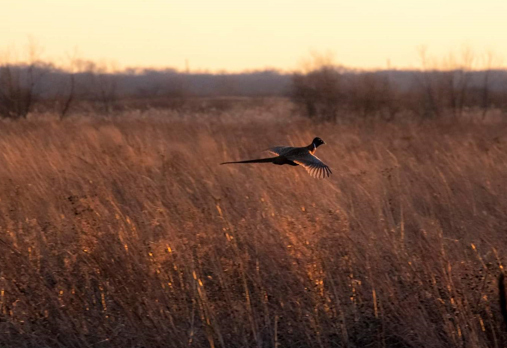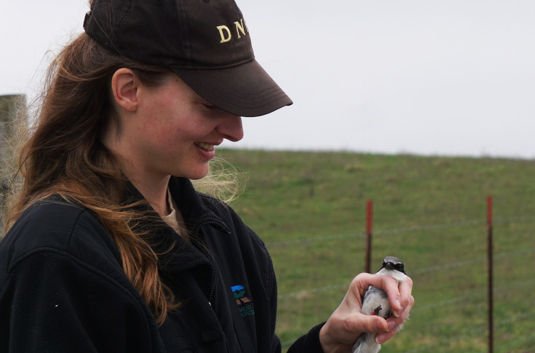New Indiana Fishing Guide is out
Pick up your hard copy of the 2019-20 Indiana Fishing Guide this week from one of our properties or retailers. The guide will be available online soon. Highlights of the new guide will include: 2019 free fishing weekends, 2018 Fish of the Year and State Record Fish, new public access sites, an overview of largemouth bass and an overview of the Lake Michigan salmonid program.
|
|
 |
DNR to set up shop at Indy Boat, Sport and Travel Show, Feb. 15-24
Visit us at the Indianapolis Boat, Sport and Travel Show, Feb. 15-24, at the Indiana State Fairgrounds. The show is presented by Renfro Productions and opens at 1 p.m. on Friday, Feb. 15.
The DNR's main location is Tackle Town, in the Blue Ribbon Pavilion. The booth is a convenient one-stop shopping opportunity for licenses, state park passes, lake-use permits, Outdoor Indiana magazine, and a State Parks GO! (Get Outside) promotion. DNR staff will be on hand throughout the show to share program information and resources, as well as answer your fish and wildlife questions.
 Fish of the Year
Of the 89 fish entered in 2018, 36 awards were earned among 23 anglers for Fish of the Year. Several anglers won multiple categories. Caught by Jakob Kintzele, the state record walleye (pictured above) measured 31.25 inches. Check out the list of 2018 winners and their catches online.
Free fishing days announced
This year's four free fishing days are April 20, May 18, and June 1-2. Indiana residents do not need a fishing license or a trout stamp to fish in public waters on these days. Several fishing events will be going on throughout the state.
 Turkey hunt applications accepted online
Hunters can apply online for a reserved turkey hunt through March 22. No late entries will be accepted. You can only apply online. Applicants must possess a hunting license valid for the hunt for which they are applying.
Youth hunters, i.e., those who will be younger than age 18 on the day of the hunt, may apply for reserved turkey hunts March 18-29. The youth wild turkey hunting season is April 20 and 21 on select DNR properties.
 2019-20 hunting seasons dates now available
The 2019-20 hunting seasons are now posted. Dates for migratory bird and waterfowl seasons will become available in the summer. Their seasons are set by the U.S. Fish and Wildlife Service in cooperation with DNR Division of Fish & Wildlife.
Reminder: Your 2018 hunting and fishing licenses are valid through March 31, 2019.
 Public access for hunters
The Access Program Providing Land Enhancements (APPLE), is beginning its second year in Indiana. With nearly 96% of Indiana land privately owned, public gamebird hunting opportunities across the state are increasingly hard to come by.
The APPLE program’s main focus is to encourage participants, through financial incentives, to allow limited public hunting of pheasant, quail and woodcock on their land. Eligible landowners who enroll in the program work with a wildlife biologist to develop a management plan to create, improve and manage habitat, as well as maintain APPLE eligibility.
For initial consideration, landowners must have a minimum of 20 acres for possible enrollment and be located in one of the five focal regions. Individuals interested in establishing and improving wildlife habitat and/or providing limited public hunting access for gamebirds are encouraged to contact their local wildlife biologist.
 Living with wildlife: Canada Geese
February is the time of year when Canada geese begin to scout for prime nesting areas. Geese prefer to nest near ponds or other waterbodies that are surrounded by short, mowed grass. This provides them with a clear view of the surrounding area and access to fresh greens for grazing.
Fortunately, harassment techniques can be implemented prior to egg laying to prevent geese from nesting at your home or business. Harassment techniques are not intended to harm geese and do not require a permit. Techniques include using of noisemaking devices such as air horns and recorded distress calls, visual devices like scarecrows and eye-spot balloons, and water spray devices, such as garden hoses or sprinklers. Harassment is more effective if multiple devices are used and if administered regularly for a minimum of two weeks.
Canada geese are intelligent and may become accustomed to harassment. To prevent this, vary the length, time, and duration of harassment. If necessary, nests may be removed at any time, without a permit, as long as no eggs are present within the nest. Be aware that efforts to deter Canada geese will not be effective if food, such as bread or birdseed, is being provided.
 Nongame Wildlife Fund at Work: Birds
Most Eastern loggerhead shrikes will be returning to their nesting areas in late February. Biologists will be watching and awaiting their arrival. Colored bands are placed on the legs of these fierce songbirds. These bands allow biologists to identify each individual shrike from a distance.
In 2018, half of all nesting shrikes that were banded returned to nest in Indiana. Nongame bird biologists are working with partners across the country to better understand the obstacles facing these state endangered birds, as the number of nesting pairs of loggerhead shrikes in Indiana has declined 83% over the last 30 years.
You can support our efforts to conserve loggerhead shrikes through your donations to the Nongame Wildlife Fund.
 Thanks to our sponsors
The Division of Fish & Wildlife recognizes and thanks the following organizations, businesses and individuals for their generous donations to the Grasslands for Gamebirds and Songbirds (GGS) initiative:
Northern Bobwhite Quail (Gold Level – contributed $50,000 or more):
The Sam Shine Foundation, Inc. and Pheasants Forever & Quail Forever, Inc.
Ring-necked Pheasant (Silver Level – contributed $25,000 - $49,999):
Green Farm Parts, Ducks Unlimited, Inc., the Indiana State Chapter of the National Wild Turkey Federation, and Duke Energy.
Loggerhead Shrike (Bronze Level - contributed $5,000 - $24, 999):
Applegate’s Seed House and the Indiana Division of the Izaak Walton League.
Prairie Chicken (contributed less than $5,000):
Davies County SWCD; Patoka Hills Quail and Upland Game Alliance, Inc.; Pheasants Forever, Central Indiana Chapter; Ernst Conservation Seeds, Inc.; Quail Forever, West Central Indiana Chapter; Dr. Charles E. Rehn; Chuck Boyce; Jeff and Karin Kiefer; Adam Pepper; James Wenzler; In Memory of Harvey Bartley; Eco Logic LLC; Northeast Indiana Delta Waterfowl; Peggy Harger-Allen; Elizabeth Harger; Jill Meyer; Gary McEdwards; Joseph Key; Bill Appenzeller; Dick Schroeder; Thomas Jackson; Ted Senior; John Peyton; George Biddlecome; Robert Pullen; David McCleary; Matt Cosgrove; Brian Mendenhall; Jason Bridegroom; Kevin Lavery; Chad Sims; Anatoly Petrov; Jon Zwinski; David Muegge; Nancy Tatum; Pheasants Forever & Quail Forever, Indian Creek Chapter; Pheasants Forever & Quail Forever, Wabash Valley Chapter; James Walters; Richard Bartley; Vaxlav Kup; and John and Cynthia Riddle.
More


About Fish and Wildlife Management in Indiana
Fish and wildlife management and public access are funded by fishing and hunting license revenue and also through the Wildlife and Sport Fish Restoration Programs administered by the U.S. Fish & Wildlife Service. These programs collect excise taxes on sporting arms and ammunition, archery equipment, fishing equipment, and motor boat fuels. The money is distributed among state fish and wildlife agencies based on land size and the number of licensed anglers and hunters in each state. Find out more information about fish and wildlife management in Indiana at Wildlife.IN.gov.
|